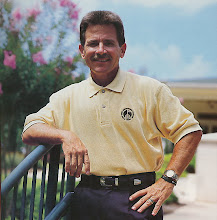The white nine greens differ distinctly from the red and blue nine greens. The differences include:
The white greens are established with L93 bentgrass which has a different type growth habit than
the A1 bentgrass variety on red and blue. A1 is a finer leafed turf. The leaf blades of the L93
are broader and react differently to heat and humidity. The wider leaf equates to increased
resistance on ball roll, therefore reducing green speed. These two varieties are very different.
The white greens have no subsurface drainage, the red and blue greens do.
Without subsurface drainage to carry the water away, the green stays saturated and wet.
The white greens are made of native soil, the blue and red rootzones are sand based.
The native clay soils hold water and do not allow it to move through and away from the rootzone.
Certainly sand based greens with drainage will be firmer and drier than moister soil greens.
Sand based greens will allow water to drain thru the profile resulting in firmer putting surfaces.
The white greens do not have as notable slopes and contours as the new red and blue greens.
Being flatter, the white greens will not have the increased speeds of a sloping green.
Thus, the putting speeds are faster on the red and blue most days.
A new bentgrass variety, increased contours, sand based rootzone and interior drainage are the
four components that differ from the white greens. All golf greens are not the same.
The photo below shows the sand based rootzone of the blue and red greens.
Notice the extremely healthy 5 to 6 inch root structure of the sand based greens
The photo below is of a darker colored soil based "white" green.
The root structure is shorter and not as healthy
The black native soil, absent of drainage, holds water and is a softer surface.
During wetter periods, the native soil particles hold water and act much like a sponge.
Void of a subsurface drainage system, the white greens hold water during rainy periods.
There is no place for the water to go. There is no drainage mechanism for water to exit.
Notice the water standing in the bottom of the cup.
Softer, wetter subsurfaces do not result in firm & fast putting surfaces.
as the newly renovated blue an red greens. Only # 4 and #5 white greens were totally rebuilt.The other seven white nine greens simply had a new bentgrass variety planted on the surface.
There was no drainage installed nor a replacement of the rootzone material. The subsurface
is the same as it was when the course was built in the early 1900s.
Below exhibits vast difference in the construction of the white vs the red and blue greens
The photo below is of White green #1 rootzone. There is no drainage mechanism in place. Therefore the greens stay soft and wet for days following a rainfall.
The photo below is a USGA sand based green as is found in the red and blue greens. The dark brown layer is a mixture of sand and organic matter. Below is a gravel layer with drainage pipe which assists in carrying water away from the green. Therefore the surface of the green dries out quicker resulting in a firmer surface with increased putting speeds.






























